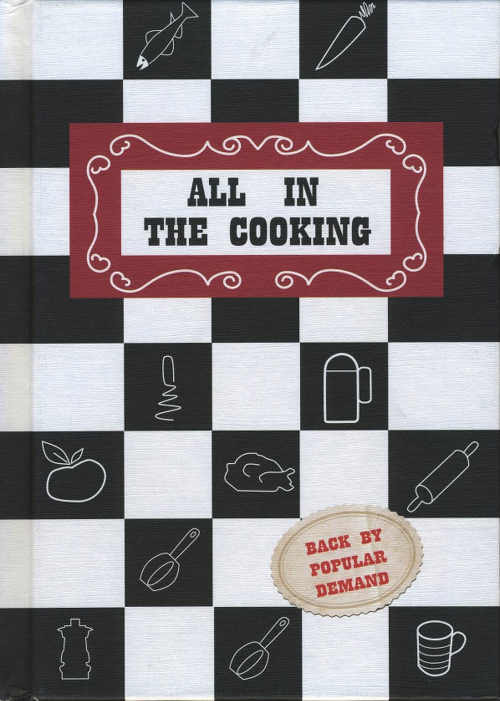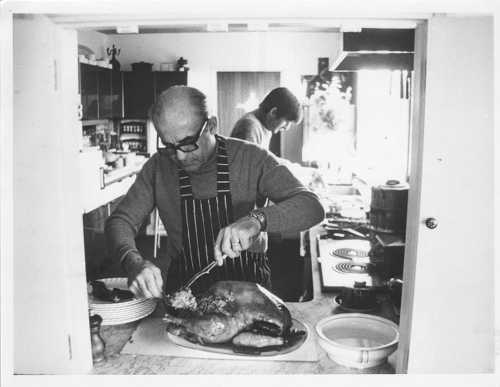Georgina Campbell's Book Review
 All in the Cooking by (O’Brien Press, €16.99 hardback 256pp; some diagrams, no photographs.)
All in the Cooking by (O’Brien Press, €16.99 hardback 256pp; some diagrams, no photographs.)
Back, as the publishers say, by very popular demand, this is the official textbook of Dublin’s famous Colaiste Mhuire Cookery School, Cathal Brugha Street, and you’ll know all about it already if you were going through college - or doing Domestic Science at an Irish secondary school - any time between the late ‘40s and early ‘70s.
It was first published in 1946 and a Foreword by one of the original authors, now in her 97th year, gives it a real sense of its place in modern Irish food history. Naturally delighted to see it back in print, and ‘to know that traditional Irish preparation and cooking of good food are enjoying renewed admiration’, Anne A. Browne (née Martin) expresses hope that it will be appreciated by a new generation.
And well it might, if they are close to their grandmothers anyway, as many a granny will happily reminisce over the disciplined, informative, thoroughly-indexed and photo-free pages that are so typical of the era, and recall the successes (and maybe a few failures) of working from one of the many dog-eared copies that were in daily use in Ireland at the time.
Maybe there won’t be much call for sheep’s head (or its variant, sheep’s head broth), brain cakes, egg cutlets or even stewed celery nowadays, but I for one could still work very happily with the Basic Kitchen Equipment that’s helpfully listed - who really needs the clatter of gadgets that clutter up our cupboards and worktops these days?
Yes, times have changed and the advice given on meal planning, shopping and food storage may seem dated, but the principles are unchanged and anyone running a home or just looking after themselves needs to know the basics if they are do it well, efficiently, economically and enjoyably.
How the quality of life would be improved for those who now stuff their trolleys with convenience foods and complain bitterly about the high cost of feeding a family if they had only been taught how to plan meals, shop well and cook wholesome food from scratch using inexpensive seasonal ingredients…Obesity was almost unknown in 1946, or even in the ‘70s when this book went out of print.
 There’s a lot of practical detail about all the primary ingredients - fish, meats poultry - including diagrams showing the Irish meat cuts (one of the things that differentiates this book from standard UK textbooks), the basic cooking methods and (happy days) carving. How many of us search around frantically for someone who can make decent hand of carving the Christmas turkey? There aren’t too many people like my father these days, happy to work away on the bird at the head of the table or in the kitchen, calmly portioning it up while everyone else flew around doing the extras...
There’s a lot of practical detail about all the primary ingredients - fish, meats poultry - including diagrams showing the Irish meat cuts (one of the things that differentiates this book from standard UK textbooks), the basic cooking methods and (happy days) carving. How many of us search around frantically for someone who can make decent hand of carving the Christmas turkey? There aren’t too many people like my father these days, happy to work away on the bird at the head of the table or in the kitchen, calmly portioning it up while everyone else flew around doing the extras...
Rabbits get a whole chapter to themselves, and maybe there’s a lesson in that, but it is the chapter on Vegetables that will surprise many younger readers. Some of the cooking methods may seem old fashioned, but the varied range of locally available produce regarded as commonplace at the time is in painfully sharp contrast to the usually poor (and unfairly priced) offering from local growers in supermarkets today.
Yes, interest in vegetables is reviving, thanks to influences such as GIY and the trend towards ‘vegetables as fashion’ in restaurants, but we have a long way to go before it becomes the norm to think about what’s in season and at its best before beginning to plan our meals.
How often do we see Irish grown garden peas, broad beans, French beans or scarlet runners (as runner beans were called), in the mainstream shops, never mind the likes of endive, salsify, kohl rabi, chicory, globe artichokes, asparagus, or watercress - all grow well in Ireland, but read the label today and they will almost certainly be imported.
Sadly, the time that this sensible book has been out of print represents lost generations of cooking skills and waning recognition of the value of our culinary heritage - and, as is now being recognised, Ireland is the poorer for that.
The Irish Food Writers’ Guild (‘A voice for better eating’) is one of the groups taking action to remedy the situation. One of the aims put forward in our White Paper “The Health of the Nation”, recently presented to Oireachtas representatives, is to “Establish an annual ‘lost cooking generation’ focus week within the Guild to support older people’s cooking skills.” (In this context ‘older people’ means other than students). There is a long way to go but, together with many other educational initiatives, including “Embedding cooking and growing skills in education from primary level onwards”, the vision is achievable - and a relevant modern book along the lines of All in the Cooking would be a great teaching tool.
On a more cheerful note, with retro style enjoying a comeback, All in the Cooking should be a fruitful reference for anyone who enjoys baking - especially anyone running a café or tea shop and looking for ways to improve menus that currently seem to be mainly ‘more of the same’.
There are plenty of the nice old fashioned hot puddings and cold sweets that have been half-forgotten (when did you last see deliciously simple Apple Snow on a menu?), for example, and there are bound to be a few recipes from the Bread and Cakes chapter that will widen the repertoire and bring smiles to the faces of family, friends and customers alike.
SAMPLE RECIPE: Eve’s Pudding
Now that Irish apples coming into season, try this comforting hot pudding from All in the Cooking. Windfalls will be fine, just adjust the sugar accordingly; margarine is the given fat for the cake mixture, as was usual at the time, but it is better made with butter.
Similarly, it would usually have been served with cornflour custard sauce (there is a recipe in the book; the famous commercial equivalent is Bird’s), but it is delicious with real egg custard.
I have given dual measurements below but, as All in the Cooking is a facsimile of the original publication, only imperial measurements are given in the book. Some essential conversions and oven temperatures are given (in rather small print) on a bookmark.
1lb/450g apples
About 2oz/5g sugar
2 cloves
About 1 dessertspoonful water
2oz/50g margarine, at room temperature
2oz/50g castor sugar
1 egg
30z/75g flour
¼ teaspoon baking powder
A few drops vanilla essence
1. Peel core and slice the apples and put them into a greased pie dish with the sugar, cloves and a little water.
2. Make the cake mixture. Beat the fat and sugar together in a bowl until white and creamy, using a wooden spoon or electric mixer. Gradually add the beaten egg and vanilla to the creamed mixture and fold in the sieved flour and baking powder with a metal spoon, adding a little water if necessary to make a dropping consistency.
3. Spread the cake mixture over the apples and smooth with a knife. Bake in a very moderate oven (350ºF, 175ºC) for 40-45minutes, until the mixture is quite cooked. Dredge castor sugar on top and serve.





There are currently no comments
Leave a comment
Not a member? Register for your free membership now!
Or leave a comment by logging in with: